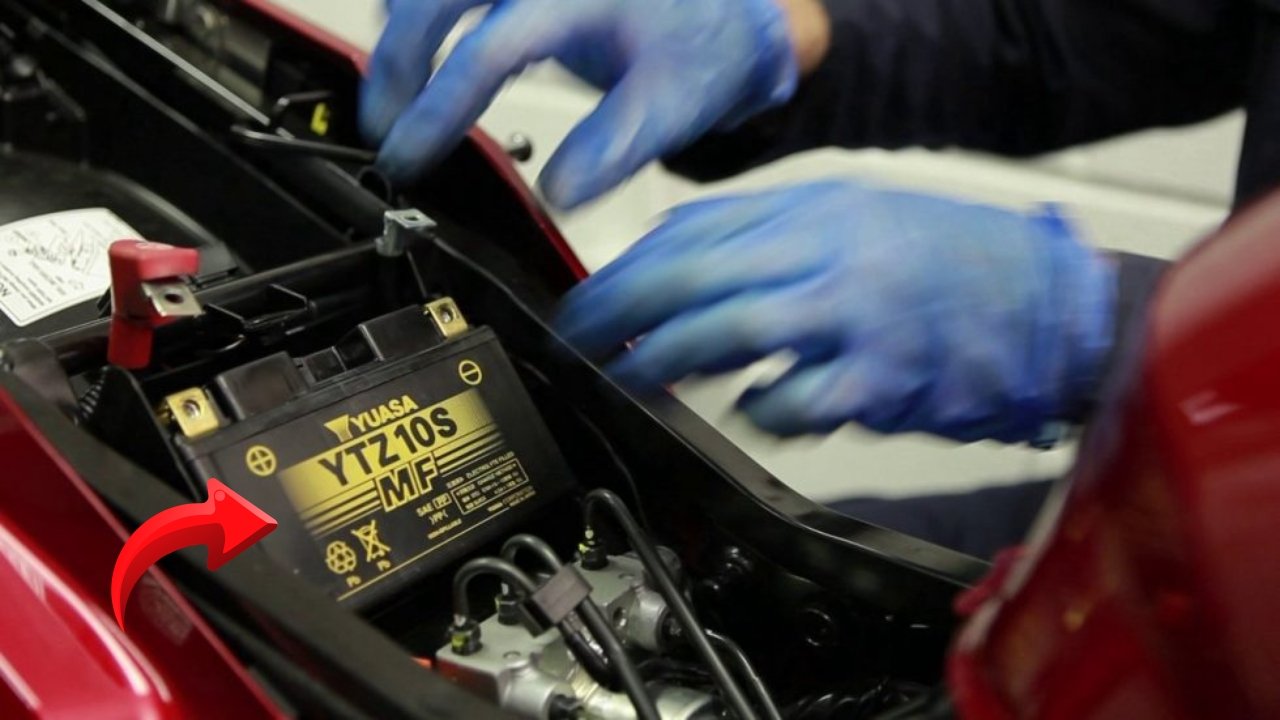Top 10 Common Two-Wheeler Battery Problems: A well-functioning battery is at the heart of your two-wheeler’s performance. Whether you’re starting your motorcycle for a daily commute or heading out on a long ride, the battery plays a crucial role in ensuring your ride is smooth, safe, and uninterrupted. However, like all components, your two-wheeler’s battery is prone to wear and tear over time. Issues can arise that affect its efficiency, reliability, and lifespan.
Understanding the common problems and how to troubleshoot them can help you maintain your battery in peak condition, reduce the chances of breakdowns, and save on unnecessary expenses. In this guide, we’ll explore the most frequent battery-related problems and offer practical solutions to help you take better care of your two-wheeler.
Contents
- 1 1. Slow Engine Crank or Hard Starts
- 2 2. Unexplained Battery Drain
- 3 3. Corroded Battery Terminals
- 4 4. Insufficient Battery Charging
- 5 5. Low Electrolyte Levels in Conventional Batteries
- 6 6. Cold Cranking Amps (CCA) Not Up to Mark
- 7 7. Faulty or Loose Battery Cables
- 8 8. Frequent Short Rides
- 9 9. Idle Bike? Use a Battery Tender
- 10 10. Know When to Seek Professional Help
- 11 Conclusion
- 12 Matrix – Trusted Partner for Two-Wheeler Batteries
1. Slow Engine Crank or Hard Starts
One of the earliest signs of a battery issue is difficulty starting the engine. If your bike cranks slowly when you try to start it, your battery might be weak or nearing the end of its life.
What to do:
Use a multimeter to check the battery voltage. A healthy fully charged battery typically reads around 12.6 to 13.0 volts. If the reading is significantly lower, you should try recharging the battery. If the battery doesn’t hold a charge even after recharging, or if it’s more than 2-3 years old, it might be time to replace it.
2. Unexplained Battery Drain
Does your battery keep draining even when your bike is parked? This could be due to a parasitic draw, where electrical components continue to consume power after the ignition is off.
What to do:
Disconnect any additional accessories such as phone chargers, GPS units, or aftermarket lights and monitor if the problem persists. If your battery still discharges without reason, it’s best to have your bike’s electrical system inspected by a technician to locate the source of the draw.
3. Corroded Battery Terminals
Battery terminals often suffer from corrosion over time, which can interfere with the connection and reduce the battery’s ability to power your two-wheeler effectively.
How to fix it:
Look for a white or greenish buildup on the terminals. To clean it, mix baking soda with a bit of water to form a paste, apply it to the corroded terminals, and scrub with a wire brush. Rinse with clean water and dry thoroughly. After cleaning, make sure the terminals are tightly secured to avoid any loose connection problems in the future.
4. Insufficient Battery Charging
If your battery isn’t charging properly while riding, the issue could lie with your two-wheeler’s charging system, often involving the stator or alternator.
Check this way:
Start your engine and measure the charging voltage using a multimeter. It should read between 13.5 to 14.5 volts while the bike is running. If the voltage is lower or unstable, the charging system might be faulty and will need professional diagnosis and repair.
5. Low Electrolyte Levels in Conventional Batteries
Some conventional batteries (non-maintenance-free) require regular checking of electrolyte fluid levels. Low levels can significantly affect battery performance and even damage the internal components.
How to top it up:
If your battery has removable caps, carefully open them and check the fluid level. Only use distilled water to top up if needed—never use tap water, as it contains minerals that can damage the battery. Be sure not to overfill beyond the marked levels.
6. Cold Cranking Amps (CCA) Not Up to Mark
Cold Cranking Amps (CCA) indicate how well your battery can start your two-wheeler in cold weather. A lower-than-required CCA can make starting the bike difficult, especially in colder conditions.
Check this with:
A battery tester that can measure CCA values. Compare the actual reading with your battery manufacturer’s recommendation. If your battery fails to meet the minimum CCA rating, consider replacing it with a better-suited one.
7. Faulty or Loose Battery Cables
Sometimes, the problem doesn’t lie with the battery but with the battery cables. Loose, frayed, or corroded cables can block the proper flow of electricity, mimicking battery issues.
Inspection tips:
Check the cable ends for any signs of rust, cracking, or fraying. Ensure the connections are tight. If corrosion is present, clean it off just like you would clean the terminals. If the cable is damaged, replace it entirely.
8. Frequent Short Rides
Short rides may not give your battery enough time to recharge fully. This is especially true for people who use their bikes for very short daily commutes or errands.
Battery care tip:
Try to take your two-wheeler on a longer ride at least once a week. A ride of 20-30 minutes at a steady pace allows the alternator to recharge the battery efficiently and helps in maintaining its health.
9. Idle Bike? Use a Battery Tender
If you don’t use your bike regularly—say, during monsoon season or winter storage—it’s a good idea to use a battery tender or maintainer. These devices keep the battery charged without overcharging it.
Why it’s useful:
Battery tenders are especially helpful for riders who travel occasionally or own multiple vehicles. It prevents deep discharging, which can significantly shorten a battery’s life.
10. Know When to Seek Professional Help
While many battery-related problems can be fixed with DIY methods, some require expert attention. If you’ve tried the above steps and the issue still persists, it’s best to let a certified mechanic handle it.
Why professional help matters:
Battery issues can sometimes be symptoms of a bigger electrical problem within the bike. A trained technician can perform a complete diagnostic, preventing future failures and ensuring long-term reliability.
Conclusion
Maintaining your two-wheeler’s battery isn’t just about avoiding inconvenient breakdowns—it’s about extending its lifespan, ensuring better performance, and staying safe on the road. From addressing slow cranks and parasitic drains to checking fluid levels and preventing corrosion, regular battery maintenance is essential for every rider.
Remember, a small amount of care today can save you from major issues tomorrow. And when in doubt, don’t hesitate to consult a professional for accurate diagnosis and service.
Matrix – Trusted Partner for Two-Wheeler Batteries
When it comes to high-quality, dependable batteries for your motorcycle or scooter, Matrix stands out as a name you can trust. As a leading manufacturer in the two-wheeler battery industry, Matrix is committed to delivering robust, long-lasting battery solutions that match the power needs of modern vehicles.
Whether you’re cruising through the city or embarking on a long-distance ride, Matrix batteries ensure your journey is powered with confidence. With our strong focus on quality, innovation, and customer satisfaction, Matrix is the go-to choice for riders who demand reliability and performance.
Choose Matrix—because your two-wheeler deserves nothing but the best.




